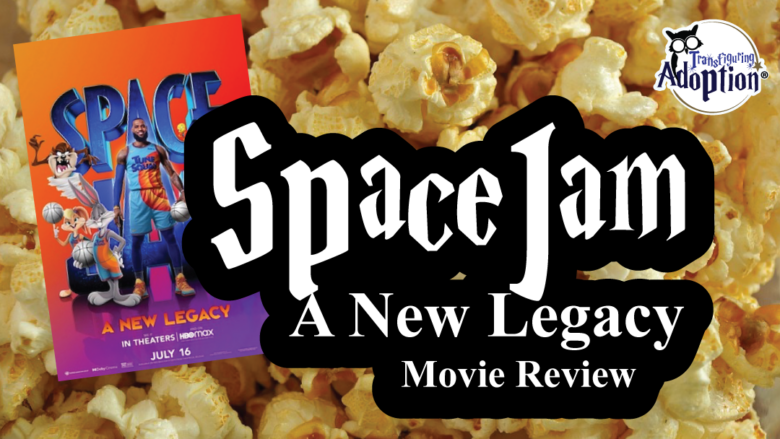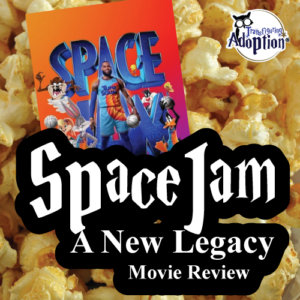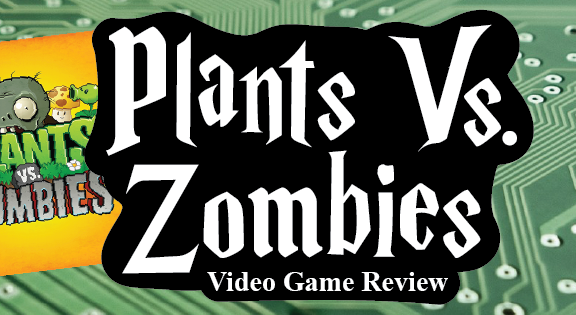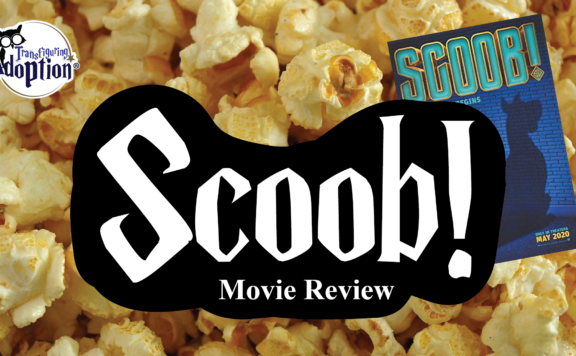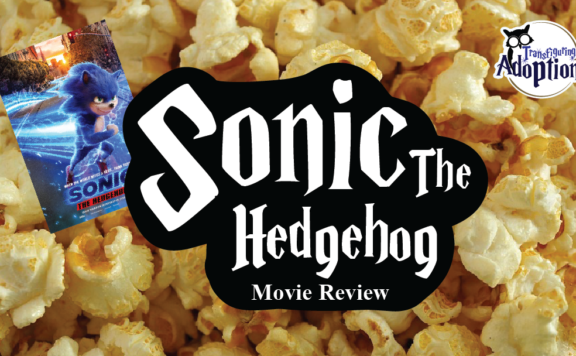Grade:
Transfiguring Adoption awarded this movie 3 Hoots out of 5 based on how useful it will be for a foster/adoptive family. [Learn more about our Hoot grading system here]
Movie Info:
- Rating: PG (Some Language, Some Cartoon Violence)
- Genre: Adventure, Kids & Family, Fantasy, Comedy
- Runtime: 115 minutes
- Studio: Warner Bros. Pictures
From the Cover of Space Jam: A New Legacy (2021) by Warner Bros.:
“When LeBron James and his young son Dom are trapped in a digital space by a rogue A.I., LeBron must get them home safe by leading Bugs, Lola Bunny and the whole gang of notoriously undisciplined Looney Tunes to victory over the A.I.’s digitized champions on the court: a powered-up roster of professional basketball stars as you’ve never seen them before. It’s Tunes versus Goons in the highest-stakes challenge of his life, that will redefine LeBron’s bond with his son and shine a light on the power of being yourself.”
Transfiguring Adoption’s Overview:
The target audience appears to be children age 11 and up. Caregivers should note that while this is a kids’ movie there are some instances of language that would indicate this is not the best film selection for younger children. It also appears this movie would be fun for most families of teens for an entertaining action movie.
Overall the film itself was a fun weekend family film experience. The movie follows the same formula as the original installment with some 2021 technological upgrades in the story as well as with the CGI used in the movie production. Families will likely enjoy this movie together as there is plenty of slap-stick cartoon humor for younger audiences while there are lots of cultural references and throwbacks for adults to chuckle at.
** Spoilers Could Be Ahead **
How Is This Relevant To Adoption & Foster Care?
So maybe Space Jam: A New Legacy (2021) isn’t the summer sequel you may have expected; it’s one that caregivers may enjoy with the children in their care for a rainy-day matinee. I honestly wasn’t sure what to expect as the original Space Jam (1996) was so abstract and manic but this sequel featured a more grounded plotline that kids could follow and identify with.
The main conflict in the film centers around the relationship of NBA superstar LeBron James and his more tech-savvy son, Dom. LeBron was taught at a young age to put distractions aside in favor of his talent for basketball and was portrayed as having very modest upbringing with his mom. While this focus and drive on his basketball skills did serve him well on the court, LeBron learns through the film that these very behaviors were inhibiting his ability to bond with his children. This especially applies to his relationship with Dom as Dom is very focused on video games… which were the very distraction LeBron was discouraged from pursuing as a child. LeBron doesn’t understand why Dom would prefer making basketball video games to playing the game that made LeBron a household name. Through a series of events LeBron and Dom are pulled into the Serververse by Al G. Rhythm, an AI program who is spurned by LeBron’s rejection of his ideas. To rescue Dom, LeBron must build a team and beat the team presented by Al. The problem? Al uses his charming façade to trick Dom into giving him his game designs and creating the Goon Squad with a lot of unfair advantages. He does this by feeding into the conflict already existing between father and son. While your child may never have experienced meeting Bugs Bunny face-to-face, I bet they know what it’s like to feel at odds with their parents’ or caregivers’ expectations. And I’m sure you, the caregiver, know what it’s like to wish the best for your child to almost a fault. So though this film may not directly address foster or adoptive care, your child will likely benefit from discussing themes in this film such as setbacks being a part of the process of growth, adults supporting children’s interests, and forming trusting relationships.
Discussion Points:
- Setbacks Happen and are A Part of the Process
I remember as a younger parent constantly stressing out over my kiddo forgetting her textbook. After teaching a foster parent class I remembered that sometimes natural consequences help our children grow. So, as usual, we continued prompting her to pack her books up but she still forgot. Instead of dropping everything for work to take her the textbook, when she called I explained to her that we had discussed this and that moving forward she was responsible for making sure she brought her book and explaining to her teacher if she forgot (as she was in middle school at that time). She very quickly learned to double check her bags after that. Though we mean well, sometimes caregivers get so afraid of our children messing up that we never give them the chance to learn that not only do setbacks happen but that they often open up the opportunity to grow. And, in turn, we also teach our children that when they fail they themselves are failures. And that is so far from the truth! One of the best things a caregiver can do is allow their children to get messy and make mistakes sometimes so that we, the bigger and wiser person, can help them through the process of learning from the mistake and coming up with a better game plan like LeBron eventually learns with Dom. - Supporting Your Child’s Interests
I get it… I can only handle so much talk about Minecraft too guys. But, sometimes as adults we forget how important it is for the adults around us to encourage and praise our interests. We tend to take it for granted when we grow up and get a chip on our shoulder about how we were raised when we were growing up. Yes, our experiences may have led to who we are today but how much better would it have been to have someone invested in not just our performance but in our capacity for joy? An adult to encourage and guide us to a more balanced sense of self rather than the burned-out worker bees some of us have become? To remember to have fun and enjoy the presence of those we love rather than continue to push for more? These are very important things to consider for the children in our life. Having fun is not an innate skill and part of a caregivers job is not only to teach children how to work, but how to have fun and invest in their interests. Maybe your child won’t become a videogame designer, but creativity and problem-solving are valuable skills that can be learned through socializing and games to use later on in all sorts of careers. And, as LeBron learned, work is not all we have in life to focus on for happiness and contentment anyway.
- Forming Trusting Relationships
This is a tough concept for children who have endured trauma. For a child with trauma often it’s the very adults trying to help them who trigger feelings of stress and being unsafe. This may not make a lot of sense to most caregivers until they realize that most adults up until this point have not been trustworthy protectors of these children. This also means that sometimes children may struggle to decipher safe versus unsafe relationships and fall into the very hands that may hurt them again, as Al does with Dom. However, there is hope as there is time for a child’s brain to make connections into their mid-to-late twenties. Helping a child identify safe vs. unsafe adults or peers is a huge life skill that will help them in all areas of growth since humans are social beings and grow in the context of relationships.
Cautionary Points:
- Cartoon Violence
Throughout the film there are lots of instances of cartoon violence. Think back to watching Looney Tunes as a child and you will get a general idea of what to expect. Most of these antics do occur specifically in the Serververse and are very clearly in the realm of fantasy due to animation and seldom involve a live-action human. This includes: sequences of being hit by trains or other vehicles, firing guns at other characters or objects, characters catching fire, a Zamboni being used to push cartoon bodies off a basketball court, characters being hit with heavy objects, characters eating one another, characters having chairs thrown at them, use of TNT and other explosives, falls from large heights, Mad Max Fury Road-inspired sequences, and Matrix-inspired sequences. There are a couple of other sequences of low-risk violence as well, such as people getting hit in the head with basketballs and such, but none of the violent acts featured involve blood, dismemberment, or anything graphic. There are also no fatalities or permanent consequences to injury thanks to being in the Serververse for most of the film. It’s important to remember though that children who have been through trauma sometimes can self-sabotage in response to bursts of adrenaline even from fun experiences like enjoying an action movie because this is the same neural pathway their traumatized brain goes through when they are experiencing fight-or-flight responses to danger. This means your child could potentially act out with survival behaviors or have nightmares in response to the violence depicted in this movie. - Some Foul Language
There are a couple of instances of adult characters saying “damn” and “hell”. There is also one instance of a character getting “bleeped” for language. - Some Implied Alcohol Use
During one sequence Bugs Bunny tells his sad story while in a Saloon setting excessively drinking carrot juice like alcohol and acts drunk. In the half-time locker room scene Granny is also seen lounging in the locker room on a bench drinking out of what appears to be a martini glass. Most children may or not catch this but this could be potentially triggering for young children with trauma concerning an intoxicated caregiver. Children who have been through trauma sadly have seen what happens when an adult uses alcohol to cope with hard situations and potentially have seen violent reactions to drinking so this can potentially be triggering to some children in this context. - Incompetent Adult
Thankfully this is not a main character, but LeBron’s best friend Malik is the poster-child of incompenent adults who can’t care for or protect children in the few scenes he is shown in. Daffy is also shown as trying to get into the Justice League by directing and filming his own “rescue” of an out of control train he started. This is a low-risk trigger but some children could be triggered by a useless adult or adult-implied character who needs more “adultier adults” to help them.
- Implied Threat and Death of Character
Throughout the movie the characters are threatened with “deletion” by Al. Bugs also sacrifices himself to keep LeBron from being deleted using a move to save Dom. Bugs does not actually die, as we find out later, but caretakers should still be aware in case a child in mortal peril is triggering for your teen.
- Characters Featured from Mature Programming
There are some characters featured from shows rated M for Mature such as Game of Thrones White Walkers, Rick and Morty, and a few others sprinkled in. While none of these characters do anything inappropriate on screen caregivers need to beware as these are not kids shows that should be pursued for your child’s viewing. Children may be confused by seeing these characters in a kid movie, especially when characters like Rick and Morty are also animated.
- Abductions of Adults and Children
Al kidnaps LeBron and Dom initially and separates Dom from his father. Later in the film Al also abducts the audience and announcers for the basketball game and threatens to keep them in the Serververse forever. This is another low-risk trigger but some children may be triggered by the theme of being abducted or “taken away”, especially if they have had such experiences themselves in the child welfare system or their adoption story.
- Manipulative and Emotionally Abusive Adult
Al not only abducts Dom but also manipulates him into fighting more against LeBron. He also becomes emotionally abusive in some sequences while trying to control Dom and keep him from his father. He does this by lying and yelling at him with a loud, angry voice. Children with traumatic backgrounds may be triggered by these sequences as they may have survived such experiences in the past.
- Sensory Overload
Especially when Al is excited or angry there are a lot of sequences of loud, booming noises and flashing lights. This may be triggering for a child who has sensory sensitivities and may already be on edge due to other triggers in the film. Again, children with trauma have brains that can activate stress responses even in response to fun or excitement so this could be potentially triggering for a child who is easily overwhelmed by excessive sensory stimuli.
Discussion Guide:
- What kind of setbacks did Dom experience with his game?
Caregiver Note: This is a question designed to help ease your child into discussing the more intensive subject. Sometimes children with trauma struggle to connect feelings to behavior so using a character in a movie will help illustrate the process of acknowledging emotions and how they correlate with behavior or vice versa. While designing and testing his game prototype Dom experiences a glitch where characters are permanently deleted whenever a certain bonus move is used in the game. As LeBron points out it’s incredible that a kid of Dom’s age made this game at all with the complex graphics, rules, and controls but Dom clearly is very challenged by this glitch. - Did the player glitch mean that the game was terrible and would never succeed?
Caregiver Note: Absolutely not! However, when we mess up at something it’s hard not to feel like our performance is not a reflection on ourselves. This especially rings true when we work very hard and become very invested in a project. I know for me it’s easy to hear that voice in my head creep up when I struggle with writing some of these reviews! It’s easy for adults to take for granted that children will come to us when they need encouragement and support, but especially for children with trauma this can be a huge struggle. Caregivers should be mindful about encouraging their child and reminding them not to listen to the negative voice inside their heads about their self-worth. We all could use a reminder every now and then that setbacks happened and are a part of the process of growing and improving. - Has there ever been a time where you felt like a setback was too big? What would have helped you grow from that?
Caregiver Note: This is a question to help connect the concepts of not defining ourselves by setbacks and that setbacks are a part of the growth and improvement process. Allow your child to speak as freely as they wish and guide this area of discussion. If your child is not super comfortable talking about this and being vulnerable it’s okay. This is not a one time question but a theme that can, and should, be revisited as your child grows older and may need different types of support. A younger child may be soothed by being held but that may not fly for a teenager. - What did LeBron love to do the most? What does Dom enjoy doing the most?
Caregiver Note: LeBron of course was very into basketball. At first this was clearly something that LeBron enjoyed doing, as was playing games on Malik’s Gameboy. However, over time LeBron was pushed to survive and thrive in a successful career to only focus on basketball fundamentals and forgot to have fun. Dom may enjoy basketball but clearly doesn’t like playing the same strict way as his father. Dom not only enjoys playing basketball but expanding on the idea with creative style points and designing characters that look like those around him. - Why was LeBron so unsupportive of Dom’s video game designing?
Caregiver Note: While LeBron and Dom may be father and son they have very different upbringings. At the start of the film it’s clear that LeBron’s mom has to work very hard to support him and misses many of his games because of her grueling work schedule. It appears that they don’t have a lot of money as LeBron borrows Malik’s games and is very dependent on honing his basketball skills to help his mother when he’s an adult. Dom on the other hand is not dependent on a skill to help support his family and has the freedom to be able to pursue fun and interests he enjoys. LeBron may seem overbearing, but to him he is preparing his son for adulthood in the only way he knows how based on his upbringing from his mother’s work ethic and his coach’s urging to not get distracted… even though some distraction is okay and can help us relax and grow in relationships. LeBron shows an example of how sometimes the things that help us survive adversity may get in the way of forming close relationships with others. Dom, thankfully, was able to experience this growth with his father and come out of the conflict with a closer, more trusting relationship with his dad but this had to be led by LeBron. LeBron had to learn that his son was not reliant on the same skill as him and could even go farther than him with his own style of basketball gaming. - How was LeBron better able to support Dom with his video game designing?
Caregiver Note: By the end of the film LeBron was not only able to engage in the video gaming and understand Dom’s interest better (and therefore discuss it better) but he was also willing to invest in Dom’s interest by allowing him to attend the E3 camp to encourage the interest. LeBron was also able to let go of some of the control he had to allow Dom to make his own decisions and connections with others while being ready in the background to encourage him and pick him up when needed. Our children need the same from us. It’s easy to push our children to do what we enjoy because, well, we enjoy it. But our children are their own persons and not an extension of ourselves. Our children are happiest when we meet them where they are at, encourage them, and support their interests to be the best version of themselves they can be. - ACTIVITY: Support Shoes
Caregiver Note: For this activity you will need construction paper, scissors, crayons/colored pencils, and a darker marker. You can also use some yarn and hole punchers if you’d like to work on practicing tying shoe laces for a kiddo who needs some extra support or enjoys sensory use with yarn. Help your child cut out the outline of a pair of basketball sneakers. For non-laced it can just be the side view. The important part regardless of what view you have is to ensure there is space for the outsole to write things on them. While designing your sick sneaks, talk to your child about their support and the people they care about. Towards the end help your child write those names on the shoes as a reminder that they have lots of support to love them and to cheer them on. - Why did Dom seem to trust Al so much at first?
Caregiver Note: Al certainly played into Dom’s weaknesses from the start. He studied the conflict between father and son intently before putting on a nice, fun persona and pretended to be interested in what Dom liked. This certainly mirrors how unsafe adults may groom a child for abuse, doesn’t it? It started with lots of compliments and gifts, but eventually this turned to angry words and control once the relationship was established. Due to past trauma, children from the child welfare system often struggle with deciphering safe versus unsafe adults for similar reasons so it is good to talk to children often about how strangers and unsafe adults may use such tactics to manipulate them. - How did Al later show he was not a safe adult?
Caregiver Note: By the time Al started needing a “bleep” for his language, Al had really invested in his relationship with Dom. While the viewers could see that over time Al would literally have a change in his voice and appearance when angry, your child may not see such subtle changes in unsafe adults when the façade cracks. Focus on how Al lies, manipulates, and gives Dom gifts to win over his loyalty and uses/steals his game features when convenient. There is clearly a dynamic where a more powerful adult is benefiting from the relationship in a way that a child will not understand and this dynamic is a huge red flag for abuse. - How did LeBron show he was a safe, trusted adult?
Caregiver Note: Though LeBron was not a perfect parent (heck, those don’t exist) he never put his son in danger, lied, or stole from him. LeBron also continuously checked on Dom’s welfare even when they were at odds with one another. LeBron was also willing to tell the truth even when it was hard and point out when things were unfair for Dom or weren’t safe for him. LeBron also showed consistency over time with being trustworthy. These are types of traits to encourage your child to seek.
**Transfiguring Adoption is a nonprofit organization seeking to nurture growth in foster and adoptive families by giving a HOOT about their families. Transfiguring Adoption does not intend for its reviewers nor its review to be professional, medical or legal advice. These reviews and discussion guides are intended to help parents to better be able to connect and understand their children who come from traumatic backgrounds.
